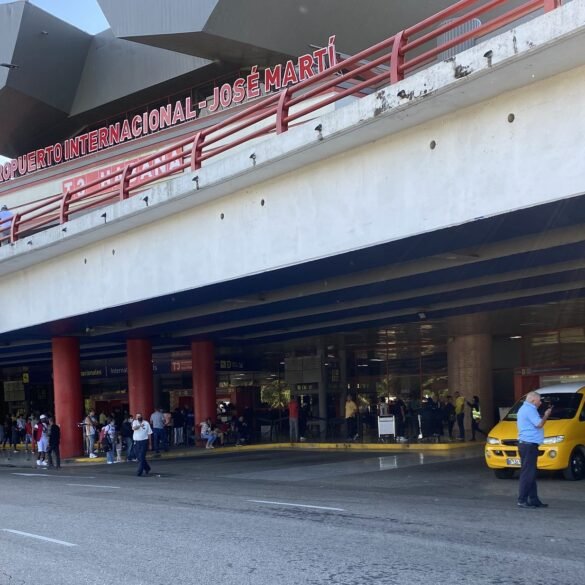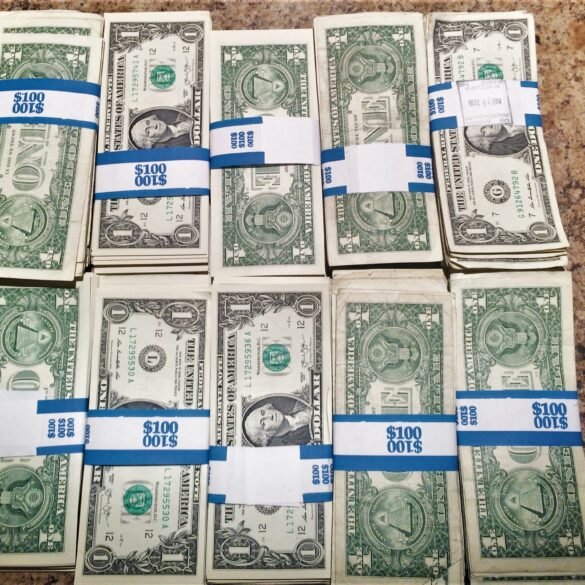The biggest headache in planning the Cuba trip wasn’t the itinerary, flights, or visa. It was money. Due to the official embargo, Cuban banks do not recognize U.S.-issued debit and credit cards. So, paying with credit cards and withdrawing cash through ATMs is absolutely not possible for anyone using American banks (which includes some international banks that are owned by U.S. companies). This means we had to bring enough cash with us to cover the entire two-week trip.
The idea of carrying that much cash on us for two weeks while traveling through an unfamiliar country is the stuff of my nightmares. What happens if we don’t bring enough? What if we lose it? What if we are robbed? What if, in the worst possible case scenario, this happens in the first few days of the vacation? Do we just pack up and hitchhike back to the airport?
I had to take multiple deep breaths while figuring all of this out, one question at a time.
So first of all, how much money to bring with us?
We needed to have enough to cover our trip, but not so much that traveling with that amount of cash would induce constant anxiety and fear. With prices in Cuba changing constantly, it was very hard to estimate how much we would be spending per day. I read in a blog that someone only brought $200 for a week in Cuba (later, it turned out they had pre-booked an all-inclusive hotel for that week), and others who spent $200 per day… per person… No matter how much I searched, I couldn’t find any current pricing for transportation or tours, and I wasn’t sure how much to trust data from several years ago.
Another thing that was making all of my calculations complicated is the whole 2 currencies system Cuba had. Apparently, there is a Cuban Peso (CUP) and a Cuban Convertible Peso (CUC). The peso is used by locals and CUCs could only be used by tourists. Cuban Pesos traded at 125 CUP = 1 USD, while the Convertible Peso traded at 1 CUC = 1 USD. The prices in CUCs for restaurants, transportation, and purchases were approximately 20 times more expensive than the listed prices in pesos. And to make things more complicated, some places only accepted pesos while others only accepted CUCs. The only way for a tourist to get their hands on pesos was to pay with CUCs and ask for change in the local currency. And just as I was starting to wrap my head around this system, I suddenly found out that CUCs were phased out in early 2021 and Cuba was back to one currency system only. No need to worry about CUCs, it’s only pesos from here on out!
I bet you are now thinking, “Well, this makes things a lot easier!” I thought the same for about 5 minutes until I continued my research.

What kind of money to bring with us?
It’s not just pesos, apparently. It’s US dollars, Canadian dollars, and Euros, all preferred by many businesses over the local currency, which constantly fluctuates and drops in value. The majority of online resources recommended bringing more Euros, which are widely accepted, and some U.S. dollars, as a backup. Apparently, local banks used to charge 10% penalty fees on exchanging U.S. currency, but that has been scrapped recently. Nevertheless, locals are supposedly still hesitant to accept payment in U.S. dollars.
In the end, we decided that $50 per person per day should be more than enough, then added one more thousand for the trip on top of that as a precaution. We ended up taking 2.5K, 1k in USD and 1.5K in Euros and only spent around $900. We made sure to bring small denominations – a lot of singles and twenties and only a few larger bills. While there were instances when we had to pay in pesos only (official museums, for example), no one refused to take our dollars in favor of Euros. In retrospect, we could have saved on conversion fees and only taken dollars with us and not even bothered with Euros.
As far as pesos go, it’s illegal to take Cuban pesos out of the country, so everything you convert into local currency needs to be converted back before you leave. To avoid having Cuban pesos taken from you at the airport, it’s recommended to convert $100 into pesos at a time. The pesos exchange is its own unique hassle. The official exchange rate is 120 CUP = 1 USD, while on the street you can get anywhere from 140 CUP to 175 CUP per 1 dollar.
Everywhere we went, people on the street approached us, calling out, “Change the money! Change the money!” Apparently, a good number of touts make their living off the exchange rates. We didn’t want to risk exchanging money on the street and usually exchanged money with our Airbnb hosts, taxi drivers, guides, and at restaurants. One word of warning – be careful getting change in pesos at restaurants, we often ended up getting a terrible conversion rate.
At least twice, we ran into unreasonable money exchange situations. Once, we paid dollars at dinner, only to find out that $11 worth of change would be converted into pesos at 120 CUP = 1 USD rate. Too tired after a long day and too tipsy after multiple delicious cocktails at dinner, we decided to agree to it. Or, rather, Victor agreed to it, as I was too busy singing along with Cuban musicians.
Another time, after buying two delicious honey and rum cocktails (canchanchara), we asked for a bill to be presented with two very confusing choices – 300 pesos or 10 Euros. To be clear, 300 pesos is approximately 2 Euros. Just as luck would have it, we were completely out of pesos. I tried questioning the waiter, but he was adamant – 300 pesos or 10 Euros. Final price. But I was just as stubborn - no way was I going to waste 8 Euros. I grabbed a twenty Euro bill and ran outside.
I walked around the square, a Euro bill in hand. This was literally the longest I ever strolled through a public street without someone inquiring, “Change the money?”
“Change the money?” I called out. No one even looked at me. They probably thought I was a tout. Finally, I found a few taxi drivers, and one of them gave me a reasonable 150 CUP = 1 USD rate. I went back to the restaurant and handed the waiter 300 pesos, expecting some kind of a catch. The waiter seemed fully satisfied.
To this day, I don’t know what that was about.

Next week: More questions, more answers, more money.

